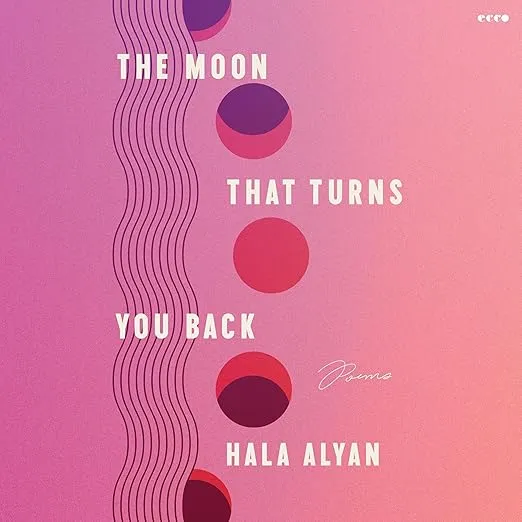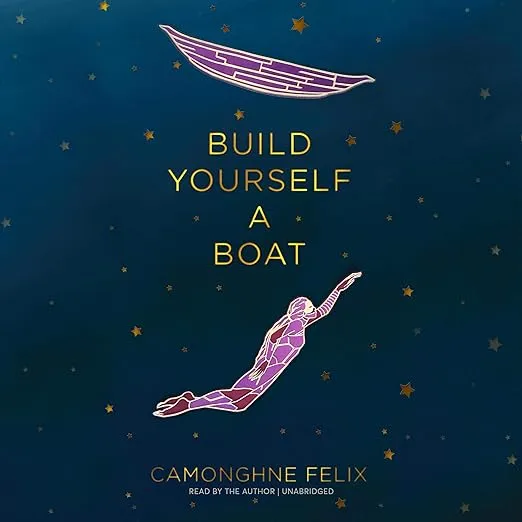
What is Immersion Reading?
Again and again, I’ve exclaimed that immersion reading, reading along with a book while the same title plays on audio, has worked its way into my bookish heart as my favorite way to read. That hasn’t changed. However, my amount of free time has dwindled. Suspecting the rarity of unbusy hands approaching, I, in the second half of last year, listened to three books immersively: Gabriel García Márquez’s One Hundred Years of Solitude, translated by Gregory Rabassa; Ghost Girl, Banana by Wiz Wharton; and Where the Line Bleeds by Jesmyn Ward.
So far, almost two thirds of the books I’ve finished in 2024 for me and me alone have been with my ears, but I begin every book I can with immersion reading. As soon as I buy or borrow an audiobook, I check if a reading sample exists online via stores, publisher sites, or Goodreads. If I find one, I press play with glee and read along to my delight until the preview winds down past 99%.
Yes, immersive reading involves technology, but it somehow resembles unplugging. Maybe because it demands total attention. On occasion I forget my phone with all of its enticing thumbnails lingers as it streams a book into my brain. And yet, what I love about immersion reading might be what some readers loathe. It complicates multitasking. If washing the dishes while delving into another world, indulging in a celebrity memoir, or basking in poems is your thing, this mode of reading may not be.
Recently, it took me 23 hours and seven minutes to complete a nine-hour-long audiobook, and much of that I spent rewinding the novel. The story felt slippery, and I grappled with holding on. My reading experience had everything to do with me. With a lot on my mind and to-do list, I kept daydreaming then hitting that back button, dreading missing anything. Some chapters played several times before I moved on, praying my subconscious understood.
No matter how much I enjoy a book, sometimes my brain drifts, especially at the opening. Maybe I’m still living in my previous book’s mood, or the writer’s style takes a moment for me to fall into its cadence, or I need to change gears between switching genres. If I don’t read along while beginning a new title, I constantly find myself starting over, which reminds me of Carina Pereira’s spectacular essay about restarting audiobooks after 30 minutes. Immersion reading not only focuses me but it saves time. While reading along, I rarely backtrack. In fact, I often find myself increasing the speed in a sort of hyperfocus.
While I don’t read my preferred way as much as I wish to, I daydream about curling up with a book and popping my earbuds in to block out the world for pages and pages. Other than the beach and its lulling waves, immersion reading is the postcard-perfect vision of vacation to me, and I hope to return to that lovely submerging. So, I find, here and there, 15-minute chunks to escape. Because of brevity, the best genre for easing back into immersion reading titles cover to cover appears to be poetry. I start with The Moon That Turns You Back.
When I noticed an audiobook of the latest collection from and narrated by Hala Alyan, one of my auto-read writers, I downloaded it immediately. If I’m uncertain how to read a poem, I attempt every path that I see possible, and this book included many pieces with innovative forms — “Key,” “april may june july,” and “Figment,” to name just a few — that I wanted to hear Alyan recite, and having the author’s guidance produced a giddy joy like peeking at an answer key. Also joy-producing: Hearting and dog-earing and scribbling notes at edges and underlining entire stanzas with the writer’s voice in my head. I mean, try not to obsess about these sentences from “Relapse Dream Ending with My Grandmother’s Hands”: “I am all spiders scrabbling for a corner. / A knot freckling the Milky Way. I am both the prophecy // and the ambush of hearing it.”
Usually, I listen at the speed of 1.1, but I tend to read prose faster with immersion reading. Looking at my immersive reading journeys on Libby, I gobbled two of 2023’s three novels before the audiobooks’ projected time (from minutes to over two hours quicker). With poetry, I found myself, while rereading Alyan and Build Yourself a Boat, yearning to slow down, hear it at the poets’ paces.
While listening with hardcopies in hand, I think, What a decadent way to read poetry. Really hearing the lines and their endings in Camonghne Felix’s narration, and having the sensation of being in the audience when a sentence grips you so tight you audibly gasp as I did at the closing of “Imagine??? My Sister an Astronaut???”: “the prodigious stuff of the stars / towering in bigness // bigger than you and you and you / and you and you.” It feels a little like attending a concert and knowing all of the words whether you whisper-scream along or gaze silently in awe.
Lately, I’ve been taking more steps toward reading this dear-to-me way. Sporadically, I search Libro.fm sales to collect duplicate titles, such as Carmen Maria Machado’s In the Dream House. If an audiobook wows me, I periodically visit a local indie bookstore to add the print copy, most recently Kaveh Akbar’s Martyr!, to my bookshelves. I maintain a Goodreads shelf of “want-to-reread” books to track titles I crave copies of in both formats. In Libby, I created a “read along” tag for books I’ve adored with my eyes or ears that I long to read immersively, including Emme Lund’s The Boy with a Bird in His Chest and Terese Marie Mailhot’s Heart Berries.
Nearing the final poem of Felix’s poignant debut collection, I’m ready for a big step, something longer. I place a hold on the audiobook of There’s Always This Year: On Basketball and Ascension by Hanif Abdurraqib while my hardcover awaits in the TBR stack topped with a white rose; ~2 weeks, the app says, and I reverberate with anticipation.
If explorations of reading practices interest you, consider browsing 6 Questions to Help You Shape Your Reading Practice, Forging More Mindful Connections to Books, and How to Create Achievable Reading Goals for the New Year.






